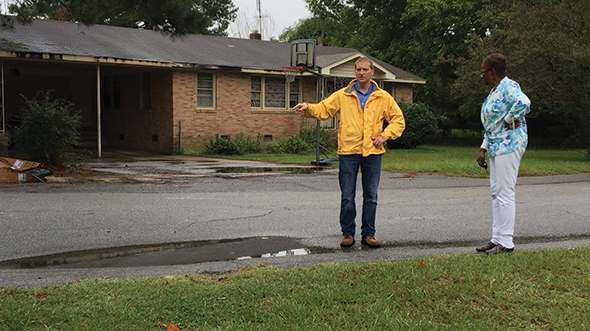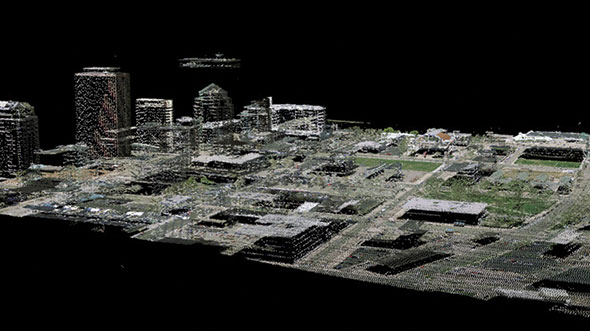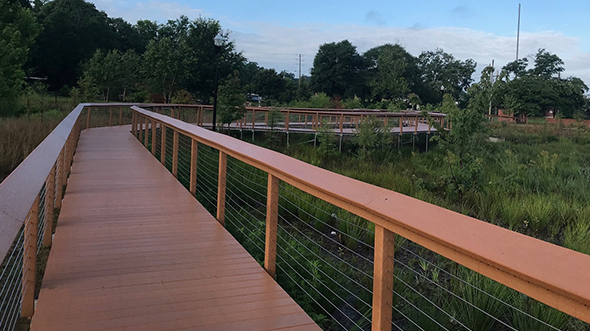
BLOG
—
Time is Now to Implement Risk-Based Asset Management for Stormwater Infrastructure
I have been working with communities and their public works officials to develop stormwater programs for over 30 years. The public works officials I work with are genuinely concerned with providing a high level of service and better quality of life for their citizens. They are also some of the hardest working people I know.
Over the last two decades, the already full workload of these public works crews, supervisors and managers has steadily increased—and with it, so has the associated stress and fatigue. I continually hear how repair crews are running from one pipe failure to another and how even routine storms overload drainage systems due to insufficient capacity. Therefore, it is not a surprise that the ASCE 2017 Infrastructure Report Card has given America’s infrastructure an overall grade of D+.
Across the country, our aging and crumbling stormwater infrastructure is causing localized flooding, water quality issues, road closures, delays in emergency response and loss of commerce. To make matters worse, our community officials and citizens often do not understand how a drainage system works or the effort required to keep it functioning at an acceptable level of service. My colleague, Brian Bates, refers to stormwater as the “forgotten infrastructure,” and he is right.
As an industry, we have done a very poor job of educating our community on stormwater infrastructure issues, especially on the connection between cost of service and level of service. We have taught them that we will collect their stormwater runoff; move it safely from their property down a street, through an intricate system of pipes, ditches and other control measures; clean it up; and discharge it into a stream all for just pennies a day.
There is an answer, but it requires a shift in how we as a public works industry do business—and, even more so, it requires a shift in our industry’s mindset. The first step to making this shift is to understand the true value of the drainage system that your community owns—not just the value of the pipe in the ground, but the value that a functioning drainage system provides. This value needs to be communicated effectively to leadership and citizens.
Along those lines, communities must determine the desired level of service that they want the drainage system to achieve—such as no street flooding during a 10-year storm event or no structural flooding during a 100-year storm event—and the real cost of providing that level of service. If citizens understand the true cost of providing the level of service, public works departments can appropriately address that objective and manage expectations.
Deriving the system value and level-of-service costs can be a relatively simple exercise. However, changing the culture and mindset of public works departments and citizens is much more complex. Our industry has been providing drainage services in a reactionary mode for so long that we believe this is the way it should be done. This is not so. We must move to a more proactive and strategic method of service delivery. We owe it to the frontline employees and their supervisors—and, above all, to the citizens we serve.
To create a drainage system that functions as intended and provides a reasonable level of service, the industry must move to a risk-based approach to stormwater infrastructure maintenance. We must embrace and develop robust asset management programs for stormwater.
Asset management is not just work order management software nor is it simply an inventory or condition assessment of your drainage system. An asset management program certainly includes those items, but it also includes understanding the criticality of your pipes, inlets and other assets; developing both functional and operational levels of service goals; performing life cycle planning; and developing an adequate and sustainable funding source.
As much as everyone would like it, there is not a quick, cheap fix to our infrastructure issues. Building an asset management program is a process, which can appear daunting. I once asked a marathoner how he could run 26.2 miles. He looked at me as if the answer should be obvious and said, “I just put one foot in front of the other until I get there.” That is exactly the right approach for developing an asset management program for your community—put one piece of the program in place at a time until you get there. Your community won’t move from 95% reactive to 95% proactive overnight, but you will see positive change with each step you take.
I am passionate about employing asset management practices for public works. The reactive approach that has been used for multiple decades is just digging a deeper hole. Infrastructure installed in the 1950s and ’60s is now 70 to 80 years old. How much longer can it last? How will we be able to keep up with rapidly increasing citizen expectations and underfunded budgets?
An asset management approach has many long-term benefits: meaningful work plans and capital improvement projects based on risk, or “worst first”; an understood and achievable level of service; a well-defined and defensible infrastructure budget; a drainage system that supports continued growth and higher demands; the reduced likelihood of catastrophic system failures; and long-term, bankable savings.
The time to change is now.



